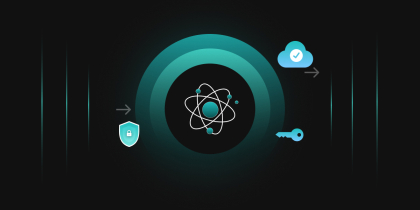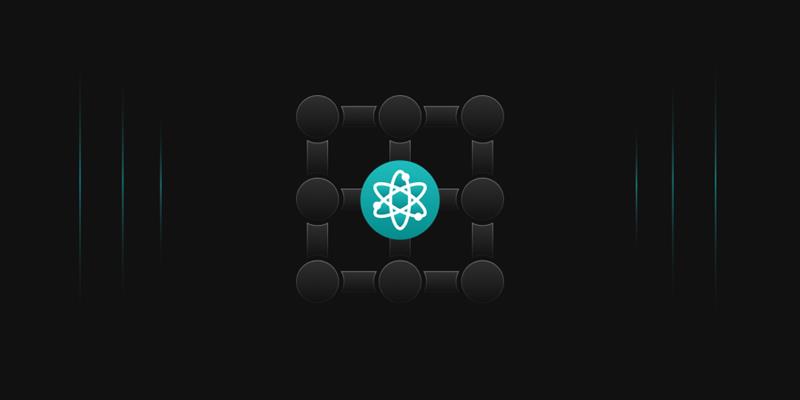In May 2025, Google Quantum AI reported a breakthrough in the practicality of breaking RSA-2048 encryption using quantum computing. Today’s most trusted encryption methods, like RSA-2048 and ECC-P256, may no longer be secure once quantum machines become powerful enough to break them. That means the data we rely on to protect personal information, financial transactions, healthcare records, and even national security could be exposed.
The question is not whether quantum computing will change cybersecurity, but when. The shift could happen in the next decade, and organizations that fail to prepare now may find themselves scrambling in the face of massive disruption. That is why a Post-Quantum Cryptography (PQC) Readiness Assessment has become so important. It gives organizations a clear view of their cryptographic risks, helps them prioritize which ones matter most, and lays out a roadmap to transition to quantum-safe protections. By 2025, post-quantum cryptography is no longer a far-off concern; it is a present-day strategic priority.
Let’s explore what a PQC Readiness Assessment involves and why it should be on every organization’s radar.
Understanding the Stakes of the Quantum Threat
Current encryption works by relying on mathematical problems that are very hard for classical computers to solve. For example, RSA encryption is based on factoring large prime numbers, which would take classical machines thousands of years to crack. However, quantum algorithms, particularly Shor’s algorithm, could solve these problems in hours or even minutes with a powerful enough quantum computer.
The consequences of this breakthrough are massive. Attackers could decrypt sensitive communications, steal intellectual property, disrupt financial systems, and compromise critical infrastructure. Even worse, data that is being collected and stored today could be vulnerable in the future. This “harvest now, decrypt later” attack means attackers could be saving encrypted information now, with the intent to decrypt it once quantum computers are capable.
Organizations cannot afford to take a wait-and-see approach. Preparing for this shift requires an organized and strategic plan, which is where the PQC Readiness Assessment comes in.
What is a PQC Readiness Assessment?
A PQC Readiness Assessment is a structured review of an organization’s cryptographic environment, designed to identify potential risks and prioritize the actions needed to secure systems against quantum threats. Instead of treating cryptography as an invisible background process, this assessment brings it to the forefront, highlighting where encryption is used, how it is managed, and what risks exist if it fails in the quantum future.
The goal is to give organizations a clear picture of their cryptographic landscape, create awareness among stakeholders, and establish a roadmap for making systems quantum-ready.
Key Steps in a PQC Readiness Assessment
Step 1: Discovery of Cryptographic Assets
The first step is to identify where cryptography is being used across the organization. This includes digital certificates, encryption keys, communication protocols, code-signing systems, authentication mechanisms, and more. Many organizations are surprised to learn how widespread cryptography really is in their operations. It protects everything from web traffic to databases, IoT devices, cloud applications, and internal systems.
Discovery is often the most time-consuming step, but it is also the most important. Without knowing where cryptography is applied, it is impossible to plan upgrades. Automated scanning tools, combined with manual reviews, can help create a complete inventory of cryptographic dependencies.
Step 2: Classification of Cryptographic Risks
Once cryptographic assets are identified, the next step is to classify them by risk level. Not all systems carry the same level of importance. For example, encryption protecting patient health records or financial transactions is far more critical than that used in test environments.
Organizations need to assess not only the technical importance of each asset but also the business and regulatory implications. A breach involving customer payment data could cause major reputational and financial damage, while a failure in internal logging systems may have less immediate impact. Classifying assets by criticality allows organizations to focus first on the areas where a quantum attack would cause the most harm.
Step 3: Gap Analysis Against Quantum-Safe Standards
With assets and risks mapped, organizations then conduct a gap analysis to see how their current cryptographic systems compare to emerging quantum-safe standards. For instance, when switching from RSA to a PQC algorithm like Dilithium, organizations can update central services rather than individual applications. Understanding how existing systems align or fail to align with these new standards helps define the transition roadmap.
This step also involves reviewing vendor dependencies. Many organizations rely on third-party platforms or cloud services that may have their own timelines for adopting quantum-safe algorithms. Identifying these gaps now allows organizations to plan vendor negotiations, compliance requirements, and integration challenges.
Step 4: Prioritization and Roadmap Development
After the gaps are identified, organizations can prioritize which systems and processes need to be upgraded first. This prioritization considers the criticality of the system, the level of risk exposure, the complexity of migration, and the timelines for industry compliance.
From here, a roadmap is developed that provides a phased approach to adoption. Instead of attempting a wholesale shift to PQC overnight, organizations can target high-risk systems first, gradually rolling out quantum-safe cryptography across their environment. This roadmap should also include training employees, updates to security policies, and integration with automation tools that make cryptographic management easier.
Step 5: Building Crypto-Agility
The final step is not just about adopting new algorithms but building a foundation for crypto-agility. This means designing systems in a way that allows them to adapt quickly as cryptographic standards evolve. The move to PQC will not be a one-time switch. Algorithms may continue to change as research advances, and organizations that remain rigid could find themselves facing repeated, disruptive migrations.
Crypto-agility ensures that systems are flexible, able to support hybrid cryptography (a mix of classical and post-quantum algorithms) during the transition, and ready to swap algorithms in and out with minimal effort. This forward-looking approach reduces long-term risk and helps organizations remain secure against both current and future threats.
Why Organizations Should Start Now?
One of the biggest challenges with quantum readiness is time. Transitioning to PQC is not a quick project. It can take years to inventory assets, classify risks, coordinate with vendors, test new algorithms, and roll out changes across complex environments.
Waiting until quantum computers are already breaking encryption will be far too late. Organizations that begin assessments now can spread out the costs and resources required, avoid rushed decision-making, and ensure compliance with evolving regulations.
Furthermore, regulators and governments are already signalling urgency. Several national strategies, including those in the United States and Europe, emphasize the need for quantum readiness. Starting now allows organizations to stay ahead of compliance pressures and demonstrate leadership in security. PQC readiness is not optional but inevitable and elevating it to a board-level priority ensures the strategic oversight needed to drive enterprise-wide commitment.
How can EC support PQC Transition?
If you are wondering where and how to begin your post-quantum journey, Encryption Consulting is here to support you. You can count on us as your trusted partner, and we will guide you through every step with clarity, confidence, and real-world expertise.
Cryptographic Discovery and Inventory
This is the foundational phase where we build visibility into your existing cryptographic infrastructure. We identify which systems are at risk from quantum threats and assess how ready your current setup is, including your PKI, HSMs, and applications. The goal is to identify what cryptographic assets exist, where they are used, and how critical they are. Comprehensive scanning of certificates, cryptographic keys, algorithms, libraries, and protocols across your IT environment, including endpoints, applications, APIs, network devices, databases, and embedded systems.
Identification of all systems (on-prem, cloud, hybrid) utilizing cryptography, such as authentication servers, HSMs, load balancers, VPNs, and more. Gathering key metadata like algorithm types, key sizes, expiration dates, issuance sources, and certificate chains. Building a detailed inventory database of all cryptographic components to serve as the baseline for risk assessment and planning.
PQC Impact Assessment
Once visibility is established, we conduct interviews with key stakeholders to assess the cryptography for quantum vulnerability and evaluate how prepared your environment is for PQC transition. Analyzing cryptographic elements for exposure to quantum threats, particularly those relying on RSA, ECC, and other soon-to-be-broken algorithms. Reviewing how Public Key Infrastructure and Hardware Security Modules are configured, and whether they support post-quantum algorithm integration. Analyzing applications for hardcoded cryptographic dependencies and identifying those requiring refactoring. Delivering a detailed report with an inventory of vulnerable cryptographic assets, risk severity ratings, and prioritization for migration.
PQC Strategy & Roadmap
With risks identified, we work with you to develop a custom, phased migration strategy that aligns with your business, technical, and regulatory requirements. Creating a tailored PQC adoption strategy that reflects your risk appetite, industry best practices, and future-proofing needs. Designing systems and workflows to support easy switching of cryptographic algorithms as standards evolve. Updating security policies, key management procedures, and internal compliance rules to align with NIST and NSA (CNSA 2.0) recommendations. Crafting a step-by-step migration roadmap with short-, medium-, and long-term goals, broken down into manageable phases such as pilot, hybrid deployment, and full implementation.
Vendor Evaluation & Proof of Concept
At this stage, we help you identify and test the right tools, technologies, and partners that can support your post-quantum goals. Helping you define technical and business requirements for RFIs/RFPs, including algorithm support, integration compatibility, performance, and vendor maturity. Identifying top vendors offering PQC-capable PKI, key management, and cryptographic solutions. Running PoC tests in isolated environments to evaluate performance, ease of integration, and overall fit for your use cases. Delivering a vendor comparison matrix and recommendation report based on real-world PoC findings.
Pilot Testing & Scaling
Before full implementation, we validate everything through controlled pilots to ensure real-world viability and minimize business disruption. Testing the new cryptographic models in a sandbox or non-production environment, typically for one or two applications. Validating interoperability with existing systems, third-party dependencies, and legacy components. Gathering feedback from IT teams, security architects, and business units to fine-tune the plan. Once everything is tested successfully, we support a smooth, scalable rollout, replacing legacy cryptographic algorithms step by step, minimizing disruption, and ensuring systems remain secure and compliant. We continue to monitor performance and provide ongoing optimization to keep your quantum defense strong, efficient, and future-ready.
PQC Implementation
Once the plan is in place, it is time to put it into action. This is the final stage where we execute the full-scale migration, integrating PQC into your live environment while ensuring compliance and continuity. Implementing hybrid models that combine classical and quantum-safe algorithms to maintain backward compatibility during transition. Rolling out PQC support across your PKI, applications, infrastructure, cloud services, and APIs. Providing hands-on training for your teams along with detailed technical documentation for ongoing maintenance. Setting up monitoring systems and lifecycle management processes to track cryptographic health, detect anomalies, and support future upgrades.
Transitioning to quantum-safe cryptography is a big step, but you do not have to take it alone. With Encryption Consulting by your side, you will have the right guidance and expertise needed to build resilient, future-ready security posture.
Reach out to us at info@encryptionconsulting.com and let us build a customized roadmap that aligns with your organization’s specific needs.
Conclusion
A PQC Readiness Assessment is more than just a technical exercise. It is a strategic initiative that prepares organizations for one of the most disruptive shifts in cybersecurity history. By identifying where cryptography is used, classifying risks, analyzing gaps, and developing a phased roadmap, with hybrid deployments as the realistic interim state, organizations can move toward a more resilient future.
The quantum threat is not science fiction. It is a fast-approaching reality with the potential to undermine the systems that power our digital lives. Businesses, governments, and institutions that act now will be better positioned to protect their data, maintain trust, and stay ahead of adversaries.
The transition will not happen overnight, but every step taken today brings organizations closer to a secure tomorrow. A well-executed PQC Readiness Assessment gives the clarity, direction, and confidence needed to navigate this journey successfully, fostering resilience, trust, and compliance leadership in an era of quantum uncertainty.




